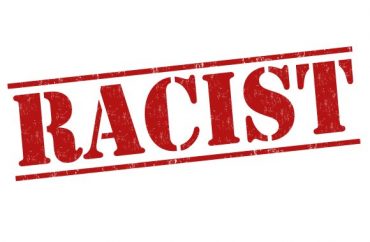
There’s a furor at the University of Nebraska at Lincoln campus over whether to publicize the race of crime suspects in campus-wide alerts.
Last month, a UNL student was sexually assaulted and the campus email alert about the incident identified the woman’s assailants as black. The notification so angered some on campus that, according to Inside Higher Ed, “university officials are now re-evaluating when and how racial identifiers should be included in such warnings.”
Similar to the feelings of students at other campuses, those objecting to race descriptors at UNL say they “breed fear because [they] can be vague and reinforce harmful stereotypes that black people commit crimes frequently.”
One UNL student tweeted her displeasure, asking “Out of all the sexual assaults that happen at UNL, why is it that the first one ever blasted to every student’s email deals with two black men[?]”
Though such alerts are rare UNL, this one wasn’t the first. There have been a grand total of three since 2015, and all included descriptions of the suspects’ race (all non-white).
The race factor wasn’t the only thing that miffed students; some accused the police of “victim blaming” due to their recommendation that students “not bring people they don’t know back to their dormitories.”
[University spokeswoman Deb] Fiddelke said that because the assailants were unknown, officials wanted to make sure the campus had all the information to identify them. She said generally, the alerts are written by the police department in conjunction with the university communications office.
“We’re looking at how we do these communications,” Fiddelke said. “We are evaluating how we might do this better in the future, if we include the races or a way to do this to explain why we’re including it — that kind of thing.” …
The Clery Act requires officials to send out a warning even if a crime on the campus hasn’t been confirmed, merely reported. And if there are not many details about a crime, police generally need to include what they do have, which may include a suspect’s race, [Executive Director of the International Association of Campus Law Enforcement Administrators Sue] Riseling said.
Riseling said she supports campus police forces sharing a suspect’s race because that informs the public and helps with an investigation. Only when a racial descriptor is all police have — “a black man committed X, for example” — should race be omitted, Riseling said.
The article also cites a Harvard study which “suggests, even subconsciously,” that race descriptors in crime reports “can shift implicit and explicit stereotypes toward entire racial groups.”
Shaun Harper, leader of USC’s Race and Equity Center, said he felt “incredibly unsafe” following a 2004 campus crime report that included a race description:
“There are lots of black students and black male professors and staff people who walk around this campus with jeans and red shirts […] I wasn’t fearful that the criminal who was on the list would do something to me. I scared to death to walk out of my building — someone might have thought that I was him.”
In the past, Harper has said being against affirmative action helps “preserve white supremacy,” and that low black college athlete graduation rates are a result of student-athletes “being duped.”
MORE: U. Cincinnati removes suspect’s race from campus crime alert
MORE: U. Minnesota settles lawsuit with employee who objected to race descriptors
IMAGE: Shutterstock.com




Please join the conversation about our stories on Facebook, Twitter, Instagram, Reddit, MeWe, Rumble, Gab, Minds and Gettr.